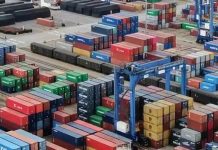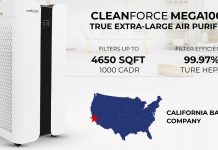Pyrolysis is the process through which elements undergo chemical decomposition in the presence of extremely high temperatures. However, the changes that occur during the pyrolysis process are not reversible. The process is typical in the treatment of organic elements. The pyrolysis of organic ingredients results in the production of both volatile products and a solid residue as well. The residue, in this case, is usually rich in carbon through a process called carbonization. Pyrolysis plants like MoreGreen use pyrolysis reactors to decompose waste oil vapor.
Forms of pyrolysis
There are different forms of pyrolysis based on what end product is produced. In all the types of pyrolysis, an element of carbon is left behind in the way of a solid residue. Some of the forms of pyrolysis include;
- Caramelization (sugar) and caramelization (polymers)
- Dry distillation (sulfates)
- Hydrous pyrolysis (refining oil)
- Destructive distillation (coke, charcoal, activated carbon)
- Flash vacuum pyrolysis (organic synthesis)
- Catagenesis (fossil fuels)
The Process of Pyrolysis

During the process of pyrolysis, the raw materials pass through a chamber with a temperature below 100 degrees where the volatiles evaporate, partially change or decompose entirely. The next stage involves heat of more than 100 degrees, where any water that is left in the element is driven off. In this stage, a lot of energy is consumed, and the temperature stops rising until the completion of this stage.
At 100 degrees-500 degrees, organic chemicals are broken down, while sugars and components of wood start to decompose. Gases and others are expelled from the sample at this stage, as well. Note, flames may be seen at this stage as some elements ignite and burn. At the end of this stage, the matter is said to have been carbonized. At the end of the combustion of the residue, powder or solid mineral residue is obtained as well as other desired end products.
Products of Pyrolysis
Some of the end products of pyrolysis include;
- Carbon, coke, charcoal, and chars
- Biofuels (in liquid and gaseous forms)
- Semiconductors
- Ethylene
- Steel wire
- Tires
Areas where pyrolysis is applied

Pyrolysis is applied in the following areas;
- Cooking
- Waste management
- Construction
- Thermal cleaning
- Carbon dating
- Production of chemical compounds
- Determination of the structure of compounds in laboratories
The process of pyrolysis is influenced by;
The following elements influence the entire process of pyrolysis;
- Composition of treated chemical compounds
- Different temperatures in different stages of the process
- The time that the materials spend in the pyrolysis reactor
- The size of the materials
- The physical products of the raw materials
Types of Pyrolysis reactors
- Bubbling fluidized bed pyrolizers
- Ablative pyrolizers
- Circulating fluid beds and transported bed

Take Away
Pyrolysis is a cost-efficient technology that can be used for processing different kinds of feedstocks; it helps to reduce wastes that go into landfills and gas emissions from greenhouses. Additionally, pyrolysis helps mitigate the risks of pollution, generates energy from domestic resources, helps in waste management, and it is a source for employment for several people.
























